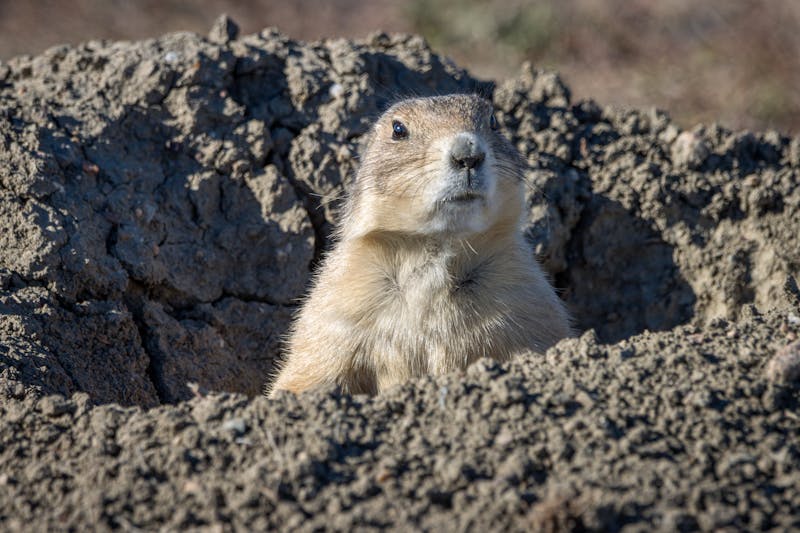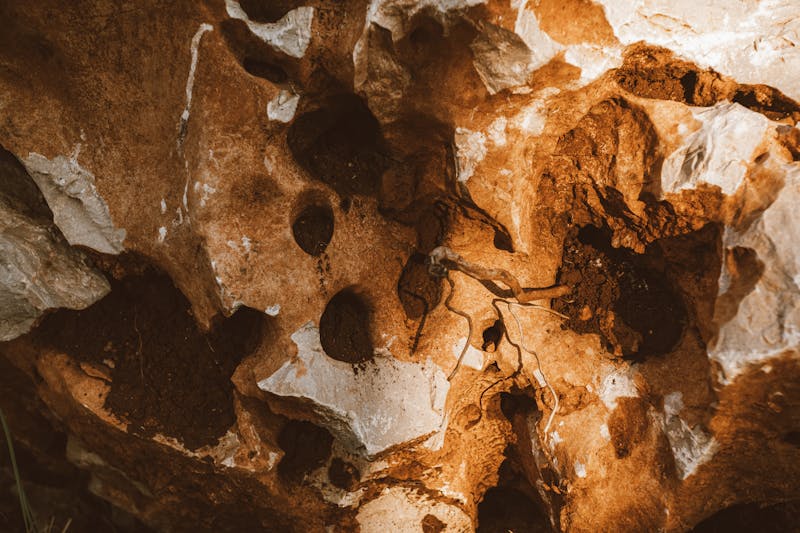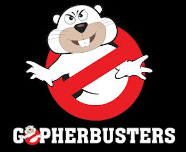Stop Confusing These Destructive Pests
Many homeowners struggle to tell the difference between gophers and moles, leading to ineffective control methods and continued property damage. While both create unsightly tunnels and mounds, they're completely different animals with distinct behaviors, diets, and control strategies. This comprehensive guide from Gopherbusters will help you identify which pest is invading your yard and how to deal with it effectively.
Fundamental Differences: Gophers vs. Moles
Gophers (Rodents)
True rodents that belong to the family Geomyidae. They have large front teeth, external cheek pouches, and are primarily herbivores that feed on plant roots and vegetation.
Moles (Insectivores)
Not rodents but insectivores belonging to the family Talpidae. They have pointed snouts, tiny eyes, and feed exclusively on insects, worms, and grubs found in soil.
Why It Matters
Proper identification is crucial because gophers and moles require completely different control methods. Using the wrong approach wastes time and money while allowing the infestation to worsen.
Physical Appearance & Characteristics
Gopher Physical Traits
- Size: 6-10 inches long with short tails
- Teeth: Large, prominent front incisors that grow continuously
- Cheek Pouches: External pouches for carrying food
- Fur: Brown to gray with short, dense fur
- Eyes: Small but visible, adapted for underground vision
Mole Physical Traits
- Size: 4-7 inches long with short, hairless tails
- Snout: Long, pointed, pink snout with sensitive whiskers
- Eyes: Tiny, often hidden by fur, nearly blind
- Front Feet: Large, shovel-like with powerful claws for digging
- Fur: Velvety, dark gray to black fur

Gophers have distinctive features including large front teeth and external cheek pouches
Behavior Patterns & Dietary Habits
Gopher Behavior & Diet
Gophers are true herbivores that spend most of their time underground. They create extensive tunnel systems and feed on plant roots, bulbs, and any vegetation they encounter while digging. Gophers are territorial and typically live alone, except during breeding season.
- Feeding: Consumes plant roots, bulbs, tubers, and above-ground vegetation
- Activity: Active year-round with peak activity in spring and fall
- Social Structure: Solitary animals that defend their territory aggressively
- Movement: Rarely surface, prefer to stay underground
Mole Behavior & Diet
Moles are insectivores that tunnel just below the soil surface in search of their prey. They're most active when soil moisture is optimal for tunneling and when insect populations are high. Moles can tunnel up to 18 feet per hour in search of food.
- Feeding: Eats earthworms, grubs, beetles, and other soil-dwelling insects
- Activity: Most active during spring and fall, less active in summer and winter
- Social Structure: Generally solitary but may share tunnel systems
- Movement: Creates surface tunnels while searching for food
💡 Key Insight
While gophers directly damage your plants by eating them, moles indirectly damage your lawn by disrupting root systems while hunting insects. The real problem with moles is often the insects they're feeding on, not the moles themselves.
Damage Patterns & Identification
Gopher Damage Signs
- Fan-shaped mounds: Distinctive mounds with soil pushed out in a fan pattern
- Plugged holes: Entrance holes are typically 2-3 inches and plugged with soil
- Plant damage: Plants suddenly wilt, disappear, or show signs of being pulled underground
- Tree damage: Young trees may be completely girdled at the base
- Extensive tunneling: Complex tunnel systems that can cover 200-2000 square feet
Mole Damage Signs
- Raised ridges: Visible raised tunnels just below the surface of your lawn
- Volcano-shaped mounds: Smaller, more rounded mounds compared to gopher mounds
- Surface tunnels: Raised lines running across your yard where moles have tunneled
- Loose soil: Areas where the ground feels spongy or loose underfoot
- Grass damage: Grass roots are disturbed, causing patches to turn brown or die

Different tunneling patterns help identify whether you're dealing with gophers or moles
Side-by-Side Comparison: Gophers vs. Moles
| Characteristic | Gophers | Moles |
|---|---|---|
| Classification | Rodent (Geomyidae) | Insectivore (Talpidae) |
| Primary Diet | Plants, roots, bulbs | Insects, worms, grubs |
| Mound Shape | Fan-shaped with plugged holes | Rounded, volcano-like |
| Tunnel Depth | Deep tunnels (6-12 inches) | Surface tunnels (2-4 inches) |
| Plant Damage | Direct feeding on vegetation | Indirect damage from tunneling |
| Activity Pattern | Year-round, peak in spring/fall | Most active in spring/fall |
| Control Strategy | Trapping and exclusion | Insect control and trapping |
| Territory Size | 200-2000 square feet | Up to 2.5 acres |
Effective Control Methods for Each Pest
Gopher Control Strategies
Since gophers are herbivores that directly damage your plants, control focuses on trapping and exclusion methods. Professional gopher removal services like those offered by Gopherbusters use specialized traps and techniques to effectively eliminate these destructive pests.
- Trapping: Professional-grade traps placed in active tunnels
- Exclusion: Underground barriers around garden beds and valuable plants
- Habitat modification: Removing food sources and making the area less attractive
- Professional removal: Expert technicians who understand gopher behavior patterns
Mole Control Strategies
Mole control often involves addressing the underlying insect problem that's attracting them to your yard. Professional mole removal services combine insect control with trapping to provide long-term solutions.
- Insect control: Treating for grubs and other soil-dwelling insects
- Trapping: Specialized mole traps in active surface tunnels
- Soil treatment: Reducing soil moisture and improving drainage
- Professional assessment: Identifying and treating the root cause of the infestation
⚠️ Important Warning
DIY pest control methods are often ineffective and can be dangerous. Professional pest control services like Gopherbusters have the expertise, equipment, and experience to safely and effectively eliminate gophers and moles from your property.
Prevention & Long-term Solutions
Gopher Prevention
- Install underground barriers around garden beds and valuable plants
- Use raised garden beds for vulnerable vegetables and flowers
- Choose plants that are less attractive to gophers
- Regular monitoring for new mounds and holes
- Professional inspection and treatment at first signs of activity
Mole Prevention
- Maintain healthy soil to reduce insect populations
- Proper lawn care including regular mowing and watering
- Treat for grubs and other soil-dwelling insects
- Improve soil drainage to reduce moisture
- Professional pest control services for ongoing protection
Professional Prevention Programs
Gopherbusters offers comprehensive prevention programs that include regular inspections, early detection, and proactive treatment to keep your property free from gophers and moles year-round. Our expert technicians understand the seasonal patterns and behaviors of these pests, allowing us to implement the most effective prevention strategies.
Ready to Solve Your Pest Problem?
Don't let gophers or moles destroy your beautiful landscape. Our expert team at Gopherbusters can quickly identify the pest type and implement the most effective control solution for your specific situation.
Knowledge is Power in Pest Control
Understanding the differences between gophers and moles is the first step toward effective pest control. While they may seem similar at first glance, these pests have completely different behaviors, diets, and control requirements. Attempting to control them without proper identification often leads to wasted time, money, and continued property damage.
For professional gopher and mole identification and removal services, trust the experts at Gopherbusters. We use proven, humane methods that are safe for your family and pets while effectively eliminating these destructive pests from your property. Our comprehensive approach includes proper identification, targeted treatment, and ongoing prevention to ensure long-term results.
Remember, early detection and professional intervention are key to minimizing damage and preventing costly repairs to your landscape. Contact Gopherbusters today for a free consultation and take the first step toward a pest-free property.

